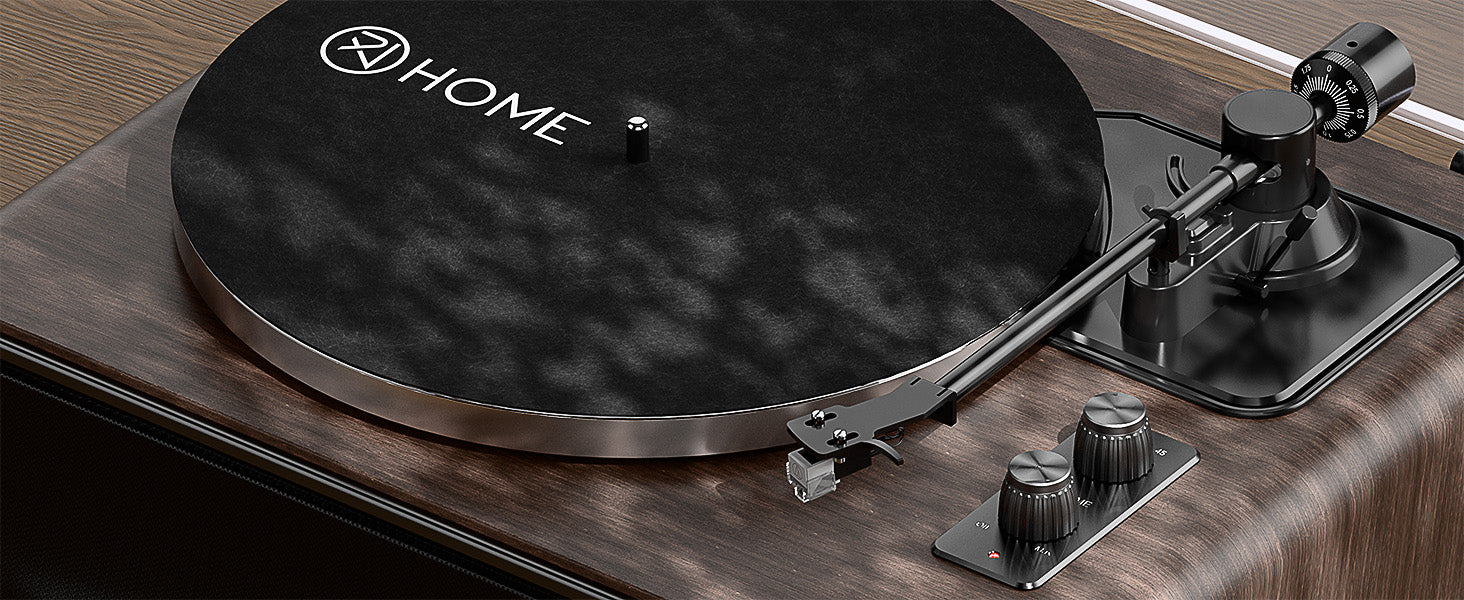In the nuanced world of vinyl playback, the debate between direct drive and belt drive turntables has been a long-standing one. For years, direct drive was largely typecast, relegated in the minds of many audiophiles to the realm of DJ booths and broadcast studios. Belt drive, with its perceived sonic purity, often held sway in hi-fi circles. But times have changed, and technology has evolved. A new generation of direct drive turntables is challenging old assumptions, offering compelling performance for the discerning home listener. So, are they right for you? Let's cut through the noise and find out.
What is a Direct Drive Turntable? The Mechanics Unveiled
The core difference lies in how the motor's power is transferred to the platter (the surface your record spins on).
-
Belt Drive: An elastic belt connects an offset motor to the platter. The motor's vibrations are, in theory, isolated by the belt and the distance.
-
Direct Drive: The platter is mounted directly onto the motor's spindle, or the motor itself forms part of the platter assembly. There's no belt; the motor's force is applied straight to the task of spinning the record.
This seemingly simple mechanical distinction has profound implications for performance, characteristics, and historical application.
A Legacy Forged in Clubs: The DJ's Indispensable Tool
You can't discuss direct drive without acknowledging its titan: the Technics SL-1200. Introduced in the 1970s, this turntable (and its subsequent MK series) became the undisputed global standard for DJs. Why?
-
High Torque & Quick Start-Up: Direct drive motors deliver power almost instantaneously, getting the platter to the correct speed in a fraction of a second. Essential for cueing tracks precisely.
-
Rock-Solid Speed Stability: Once at speed, they stay there, largely impervious to the stylus drag that can subtly affect belt-driven tables. This accuracy is critical for beatmatching.
-
Durability: Built like tanks, these turntables could withstand the rigors of nightly club use, transportation, and the physical manipulation (like scratching) that DJs employed.
-
Pitch Control: Variable pitch sliders allowed DJs to adjust playback speed, a cornerstone of creative mixing.
This DJ legacy, while a testament to direct drive's robustness, also inadvertently typecast it. The features prized by DJs weren't always seen as priorities for home hi-fi, and early direct drive systems sometimes faced criticism for motor noise.
Beyond the DJ Booth: Direct Drive for the Discerning Listener
The audiophile landscape is increasingly recognizing that the very attributes that made direct drive king in the clubs can, when refined, offer significant advantages for critical home listening.
-
Unwavering Speed Stability (Low Wow & Flutter): This is arguably the most significant audiophile benefit. "Wow" refers to slow speed variations, and "flutter" to faster ones. Both can smear the sound, affecting pitch, imaging, and the sense of musical timing. High-quality direct drive systems excel here, offering exceptionally low wow and flutter figures. For a deeper understanding of these terms, resources like the SoundStage! Network's glossary provide excellent explanations. The precision of direct drive can deliver a sound that feels more grounded, focused, and rhythmically secure.
-
Rapid Start-Up & Precise Operation: While you're unlikely to be scratching or beatmatching in your listening room, the quick start-up and precise speed control are indicative of a well-engineered machine. It speaks to the quality of the motor and its control system.
-
Durability & Low Maintenance: With no belts to stretch, slip, or replace, direct drive turntables are inherently low-maintenance. The motors are typically brushless and designed for longevity. This "set it and forget it" aspect appeals to many who simply want to enjoy their music without fuss.
Addressing the Elephant in the Groove: The Motor Noise Myth
The historical bugbear of direct drive for audiophile use was the potential for motor noise or "rumble" to be transmitted directly to the platter and, consequently, to the stylus. Early or poorly implemented designs could indeed suffer from this, as the motor is in such close proximity to the playback system.
However, modern high-quality direct drive turntables have largely conquered this challenge through sophisticated engineering:
-
Coreless Direct Drive Motors: Many top-tier modern designs (like those from Technics and Audio-Technica) utilize coreless motors. These eliminate "cogging" – minute speed pulsations caused by the interaction of magnets and iron cores in traditional motors – resulting in exceptionally smooth rotation and reduced vibration.
-
Advanced Platter Damping: Platters are now often multi-layered constructions, using heavy materials (like die-cast aluminum) combined with damping compounds (like rubber or specialized polymers) to absorb and dissipate any residual motor vibrations before they can affect the record.
-
Sophisticated Motor Control Circuitry: Quartz-locked speed control and other advanced servo systems ensure that the motor operates with extreme precision and minimal electrical noise.
The result? The best modern direct drive turntables can achieve noise floors that are competitive with, and sometimes even superior to, their belt-driven counterparts in similar price brackets.
So, Who is a Modern Direct Drive Turntable For?
A high-quality direct drive turntable in 2025 can be an excellent choice for a wide range of listeners:
-
The Pitch Perfectionist: If you are highly sensitive to pitch variations and value absolute speed stability and rhythmic integrity, a good direct drive is hard to beat.
-
The Low-Maintenance Enthusiast: If you appreciate robust engineering and prefer a turntable that requires minimal ongoing attention (no belt changes), direct drive is very appealing.
-
The Multi-Speed Collector: Many direct drive models offer 33⅓, 45, and even 78 RPM speeds at the touch of a button, making them ideal for those with diverse record collections.
-
The Archivist/Digitizer: The stable speed and ease of use can be beneficial if you plan on digitizing your vinyl.
-
The Listener Seeking Clarity & Precision: The controlled, stable presentation of a good direct drive can contribute to a sound that is detailed, focused, and articulate.
What to Look For in a Hi-Fi Direct Drive Turntable (2025)
If you're considering a direct drive for your hi-fi system, pay attention to:
-
Motor Design: Look for terms like "coreless motor," "low cogging," and "quartz-locked speed control." These indicate advanced engineering aimed at smooth, quiet operation.
-
Platter Construction & Damping: A heavy, well-damped platter is crucial. Multi-layer designs are a good sign.
-
Tonearm Quality: As with any turntable, the tonearm is a critical component. It should be well-matched to the turntable's capabilities and allow for proper cartridge setup.
-
Isolation & Plinth Design: A rigid, well-damped plinth and effective isolation feet are essential to prevent external vibrations (and any residual motor vibrations) from reaching the stylus.
The Direct Drive Renaissance: Notable Examples
The resurgence of direct drive in hi-fi has brought forth some exceptional models. Brands like Technics continue their legacy with audiophile-focused decks like the SL-1500C and the higher-end SL-1200G/GR series. Audio-Technica offers excellent value with models like the AT-LP5X and the more DJ-oriented but still hi-fi capable AT-LP140XP. Even traditional belt-drive stalwarts are exploring direct drive, and boutique brands are innovating in this space.
System Synergy: The Final Piece
Remember, a turntable, whether direct drive or belt drive, is part of a larger audio ecosystem. Its ultimate performance will be influenced by the quality of your phono preamplifier, amplifier, speakers, and even your cabling. Achieving true audio excellence, a philosophy we champion at XJ-HOME, is about the synergy of well-chosen components. A high-quality direct drive turntable deserves to be paired with electronics and cables that can reveal its full potential. You can explore our perspective on system building and component quality at https://xenonjade.com.
Is Direct Drive Your Drive?
The notion that direct drive is solely for DJs is outdated. Modern direct drive turntables offer a compelling combination of speed accuracy, durability, low maintenance, and, crucially, high-fidelity sound. If these attributes align with your listening priorities, then a direct drive turntable might not just be right for you – it might be the perfect engine for your vinyl journey. Don't let old biases steer you away from what could be an incredibly rewarding listening experience.





Leave a comment
All comments are moderated before being published.
This site is protected by hCaptcha and the hCaptcha Privacy Policy and Terms of Service apply.